From beautiful dragonflies to tiny voles, a diverse range of wildlife lives near the UK’s waterways. You may be fortunate enough to spot some of these creatures as you spend time near the water, but there is no question that biodiversity across the UK is in decline. A staggering 15% of species are facing extinction and this trend shows no sign of slowing1. In fact, three species included in this guide – otters, water voles and red squirrels – are counted on the UK 2022 endangered species list2.
These losses can often be linked to rising pollution levels and natural habitat destruction. It is therefore essential to monitor the abundance and diversity of water-based wildlife to increase understanding of pollution in an area. You can use this helpful guide to learn to identify them.
Dragonflies & Damselflies
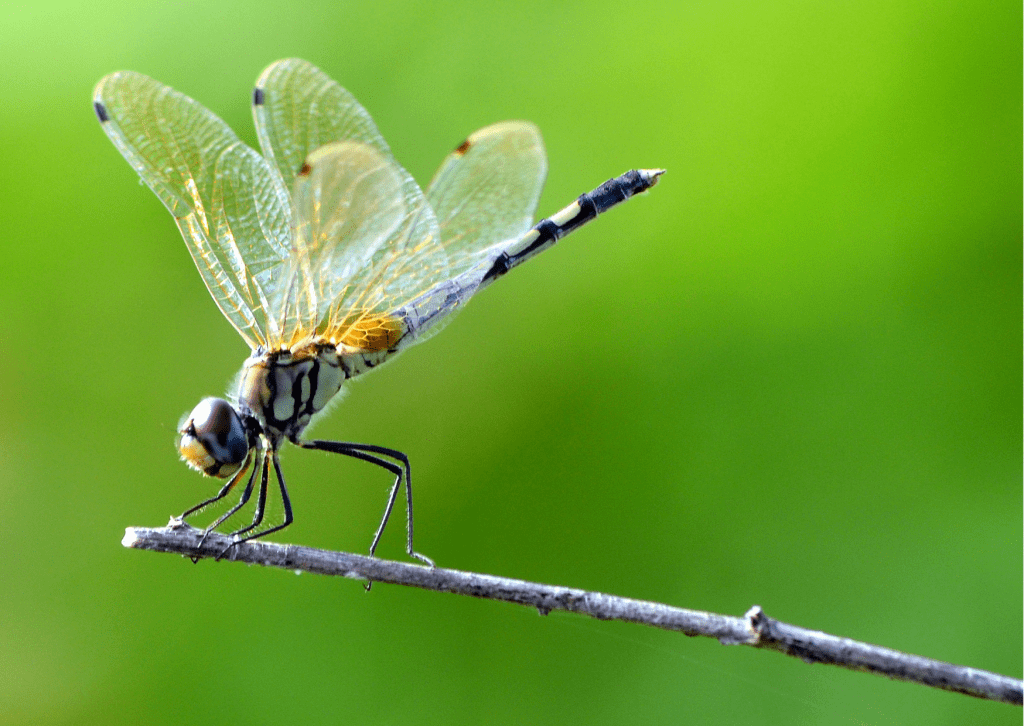
Distinguishing features:
Some red; some blue, there are many different species of dragonflies and damselflies. But whatever their colour or size, these insects have distinctively rapid movements.
Damselflies are smaller than dragonflies and always have their wings closed at rest. In flight, they exhibit more fluttering motions than dragonflies. In comparison, dragonflies are larger and always have their wings open at rest. They also appear much stronger than damselflies in the air and move with less fluttering.
When and where?:
Depending on the specific species, dragonflies and damselflies come out from early to late summer. As well as wetlands, you can also find them around moorlands and woodland glades. They thrive in areas where water is good quality so if you spot numerous dragonflies and damselflies, it is a good sign of a healthy ecosystem.
Behaviours:
Both dragonflies and damselflies are fast and agile. You will observe them performing huge aerial manoeuvres as they hunt for their prey and can reach speeds of 36kmp/h.
At other times, they can sit perfectly still. Whether it is a damselfly with closed wings or a dragonfly with open wings, they are relatively easy to spot.
Fun fact:
Dragonflies pre-date the dinosaurs! They first appeared on earth around 300 million years ago.
Kingfishers
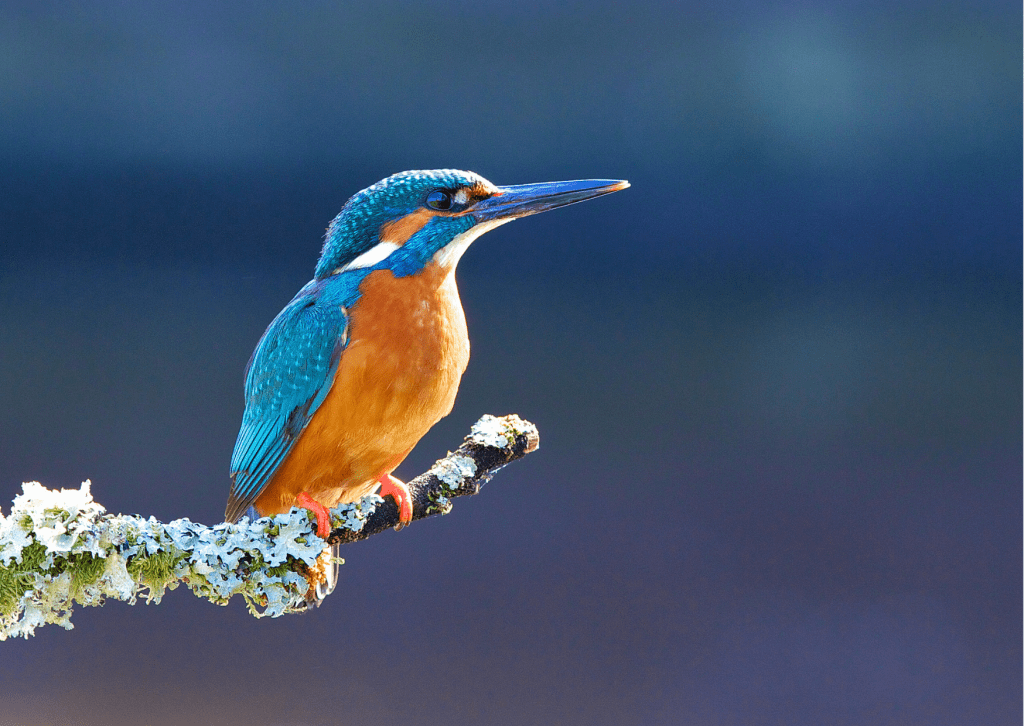
Distinguishing features:
The most striking feature of the Kingfisher are its vibrant, blue feathers. These small, fast-moving birds often whizz past in a flash of bright blue – you blink and you miss it!
If you are lucky enough to see a stationary kingfisher, you will observe a small, stout bird with short wings and tail. Somewhat out-of-proportion, they have large heads and long bills shaped like a dagger. It’s this bill that distinguishes the males from the females – for a male it is all black, whereas a female has a flash of red on the lower half of her beak.
When and where?:
Although Kingfishers live throughout the UK, they are most common in the Midlands, South of England and increasingly, Scotland. You can usually spot them near slow flowing water such as lakes, canals and rivers in lowland areas. They occasionally even venture out to garden ponds. While they are active all year, you are most likely to see a Kingfisher in Spring or Summer.
Behaviours:
Kingfishers are notoriously hard to spot. They perch on a branch and then, in a flash, they zoom across a waterway in search of fish. If you listen closely, you may even hear a distinctive ‘peep-peep’ sound as they fly.
Fun fact:
Kingfishers close their eyes as they dive into the water to catch a fish.
Grey Herons
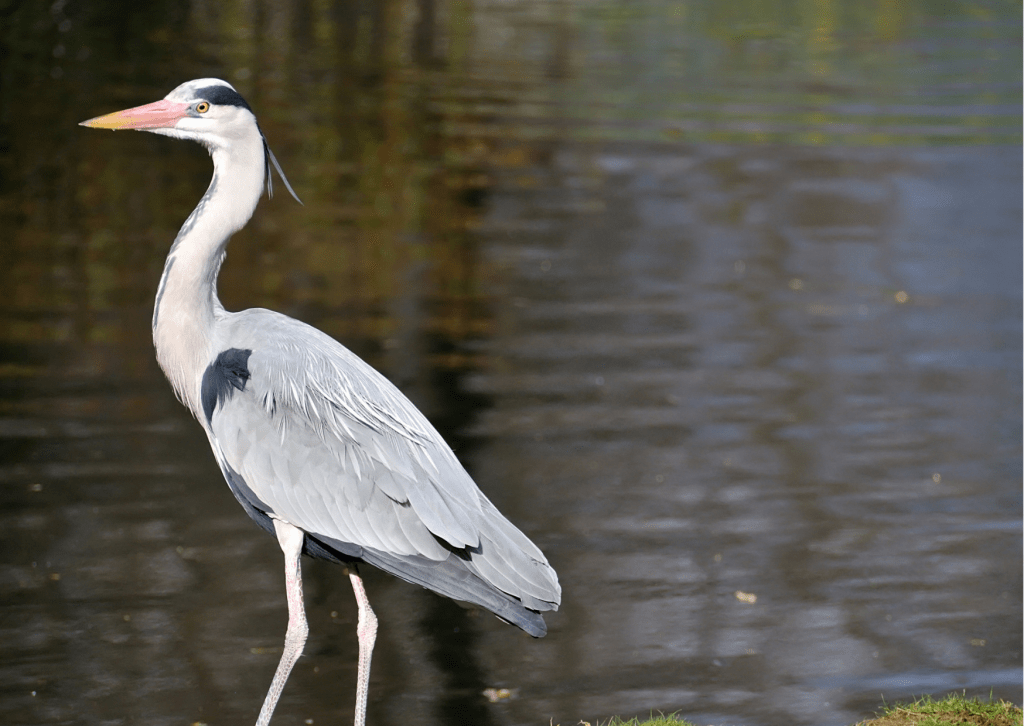
Distinguishing features:
The defining feature of a Grey Heron is its long legs and wide wingspan. These tall birds have long beaks and a collection of black, white and grey feathers. They either stand with their necks stretched out, or they huddle down, bending their necks over their chest.
When and where?:
Grey Herons are never far from water. Be it a garden pond, lake, river or canal, you are likely to come across a Heron. These birds are not confined to the countryside and can even venture to urban areas.You are in with a chance of spotting a Grey Heron at any time of year as they do not migrate in the Winter.
Behaviours:
As quite solitary birds, Grey Herons spend a lot of time alone. They are often seen standing still in shallow waters of ponds and lakes. However, they nest in noisy colonies, frequently coming down to hunt for fish, rodents and frogs.
Fun fact:
The Grey Heron’s nesting site is called a ‘Heronary’. These breeding grounds are used by many generations!
Moorhens
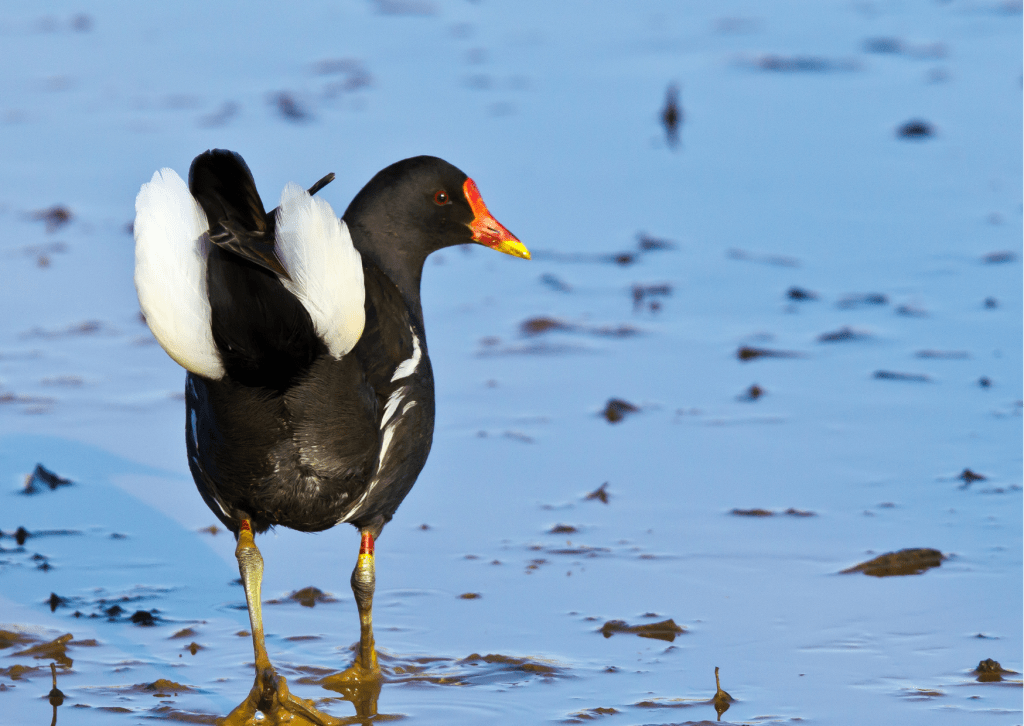
Distinguishing features:
Moorhen feathers tend to be dark brown on their backs and wings but more blue toned on their bellies. Unless you observe them closely, they appear to be black. However, the rest of their features are more striking. With a red and yellow beak and long, green legs, Moorhens are pretty easy to spot.
When and where?:
Moorhens usually live around water so you will almost certainly find them at ponds, lakes, streams, rivers or even settled in city parks. However, they are less common in Northern Scotland, Northern England and the uplands of Wales.
Behaviours:
Moorhens tend to forage close to the water’s edge. They also duck beneath the surface to feed on water plants and small fish. They build nests in dense vegetation or on branches overhanging the water. Both parents are present to feed and raise the chicks.
Fun fact:
The “moor” refers to “meres”, or small lakes, and the name moorhen simply means “bird of the marshes”.
Coots
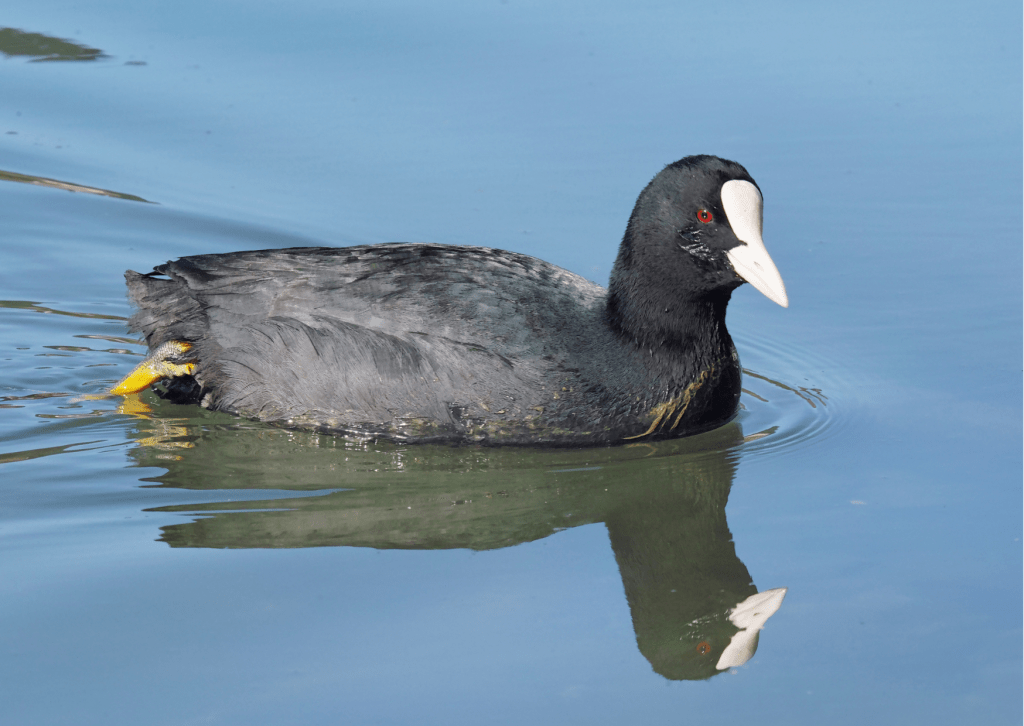
Distinguishing features:
You could be forgiven for confusing a Coot with a Moorhen. Coots too have predominantly black and grey feathers and yellowy-green legs. But don’t give up, there are a few significant differences between the two. Unlike moorhens, Coots have strangely knobbly, grey feet.They have stand-out, white faces, red eyes and a pale pink bill.
When and where?:
Coots are widespread and can seen all year round across the UK, except in the North and West of Scotland. They tend to live on freshwater lakes, reservoirs and rivers, as well as in deeper park lakes. They are sometimes found offshore when inland water freezes in winter.
Behaviours:
Coots tend to spend most of their time away from the banks of waterways, usually diving for food. They can be heard pattering around noisily with their big feet before taking off on the water. Coots are not amenable- they tend to be aggressive towards other creatures.
Fun fact:
Male coots defend their nesting sites by attacking rivals with their feet.
Water Voles
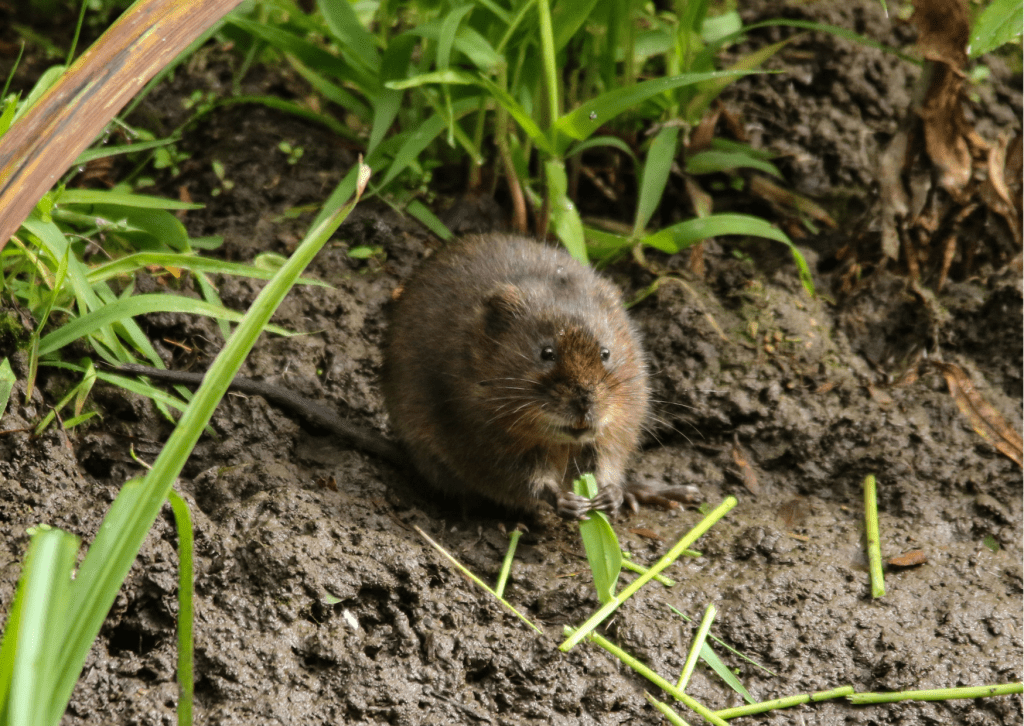
Distinguishing features:
The water vole is the largest of the vole family. It has brown fur, a rounded nose, small ears, and a furry tail. Scotland’s water voles often appear darker, occasionally even showing a black coat.
When and where?:
Water voles tend to live…you guessed it, near water! Making their homes by rivers, streams, ponds, marshes and reedbeds they are certainly not fussy. It is easiest to spot them in springtime because vegetation is shorter. However, the water vole is in decline and you are by no means guaranteed to see these small mammals.
Behaviour:
Water voles tend to sit still and eat, leaving behind evidence that you can identify. Some tell-tale signs of voles include piles of chewed grass and stems by the water’s edge. You may also spot their rounded, cylindrical droppings.
Fun fact:
In ideal conditions, a female water can give birth to a second litter just 22 days after her first.
Otters
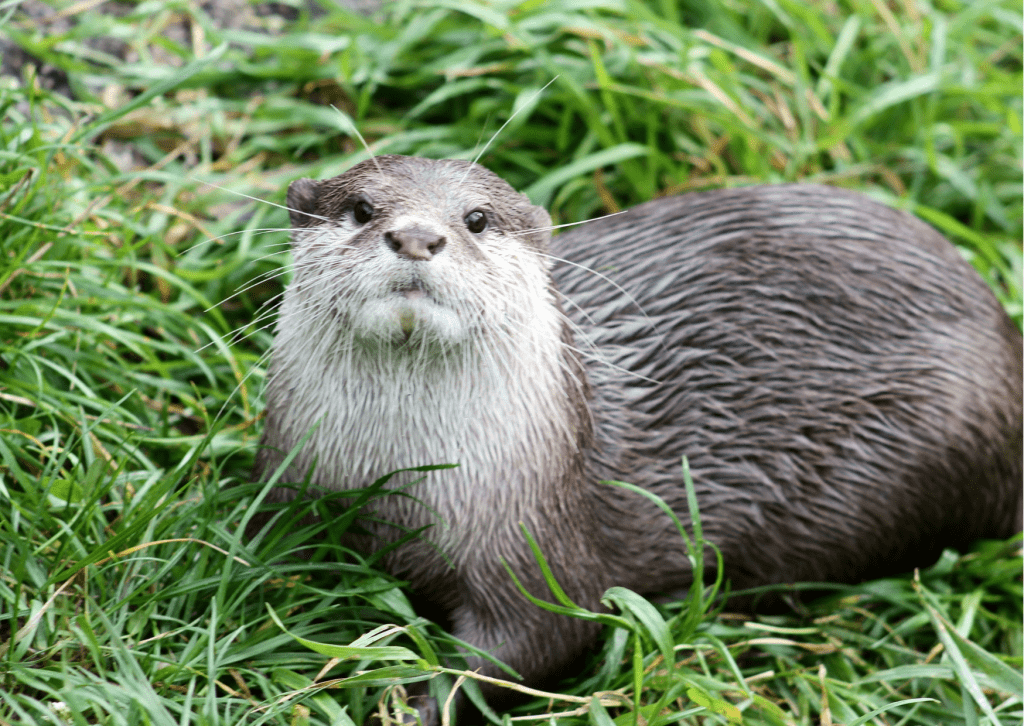
Distinguishing features:
Otters tend to be slender and long-bodied with short legs. They have thick brown fur that is often pale underneath. You’ll notice they have small ears on a broad head, with a long thick tail and webbed feet. They swim very low in the water, with their head and back partially hidden.
When and where?:
Although otters dwell in diverse locations across the UK, they are still considered rare. You are most likely to see one in Scotland, the west coast of Wales, East Anglia and South West England.
Although some otters live in saltwater, we focus here on freshwater otters. If you are lucky enough to see one, it is likely to be around dawn or dusk. They prefer clean water and overgrown riverbanks which provide shelter for raising their young.
Behaviours:
Ever-elusive, it is perhaps more likely that you will spot evidence of an otter than the animal itself. They slide down riverbanks on their bellies, leaving behind distinctive ‘slipways’. They also leave droppings near tree roots, riverside rocks and under bridges.
The behaviour of other wildlife can help to indicate the presence of otters. For example, ducks swimming rapidly away from a certain area may mean there is an otter hunting nearby.
Fun fact:
The collective noun for a group of otters is a romp!
Foxes
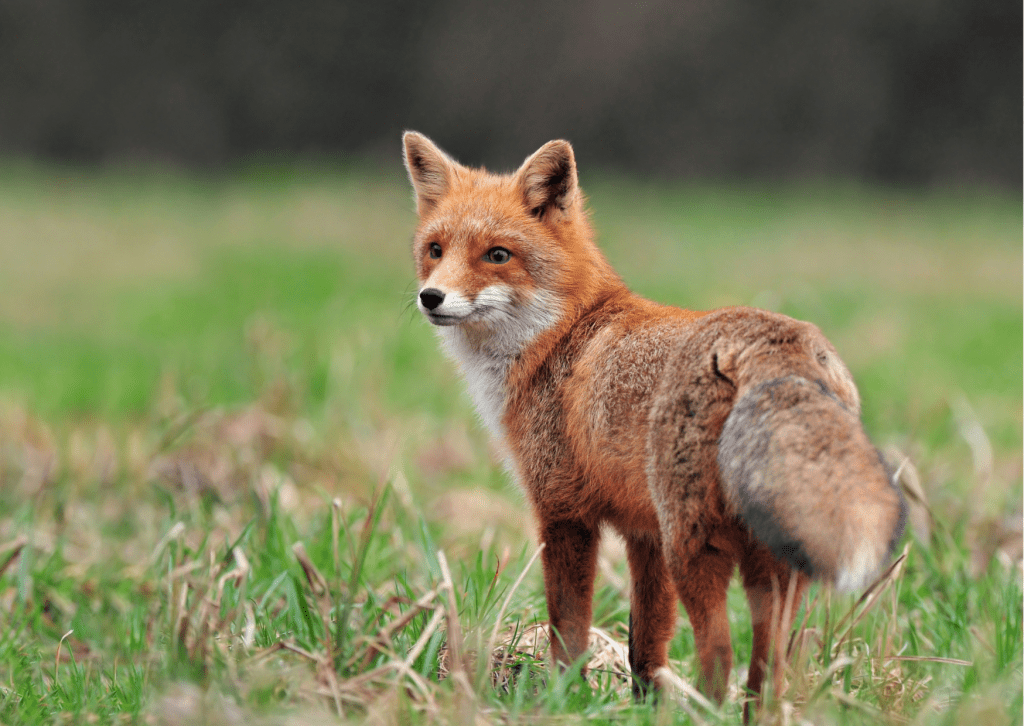
Distinguishing features:
The fox has reddy-brown fur with a white blaze on its chest. They are most famous for their thick, white-tipped tails – often known as a brush.
When and where?:
Foxes are versatile creatures. Widespread across the UK, they can adapt to most habitats. As such, you can find them in both rural and urban areas. Although foxes prefer to come out at dawn or dusk, urban foxes in particular are becoming increasingly brazen! It would not be at all unusual to see an urban fox in the daytime.
Behaviours:
Where there is food, there may well be a fox! In the countryside, you are most likely to find them in woodlands or wetlands closeby to farms. In urban areas, they are most visible in gardens or around waste bins.
Fun fact:
Foxes have whiskers on their legs and face that help them to navigate and can even sense the earth’s magnetic field!
Grey & Red Squirrels
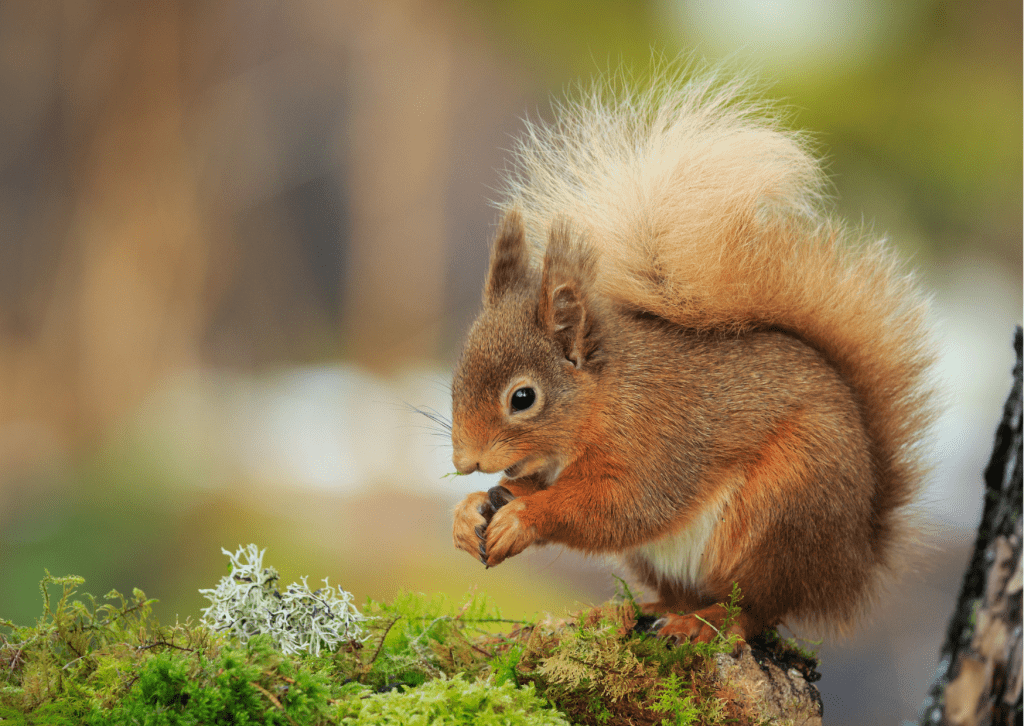
Distinguishing features:
There are two types of squirrel in the UK: the grey and the red. While red squirrels are native, the invasive grey squirrel is far more common. Grey squirrels are larger and have seriously out-competed red squirrels since they were introduced.
In spite of their name, grey squirrels also have brown fur, especially on their flanks and back. Young squirrels are a darker grey than adults.
When and where?:
While grey squirrels are prevalent in most areas of the UK, you are unlikely to see a red squirrel outside of Scotland or selected nature reserves.
Grey squirrels are often found in woods, gardens and parks across both urban and rural areas. They also frequent gardens with bird tables and feeders. They tend to be more active during the earliest and latest hours of the day, often avoiding the heat in the middle of the summer. Although they do not hibernate, they sometimes disappear to sleep at different times during the day in colder months.
Behaviours:
Squirrels are active, often leaping between branches as they forage for food. You may also see squirrels making nests, known as dreys. in trees. These dreys are mainly made of dry leaves and twigs. In urban areas, they can also nest in attics, but this is problematic and can cause serious damage to a building.
Fun fact:
Squirrels are rodents, meaning that their front teeth never stop growing.
Rabbits & Hares
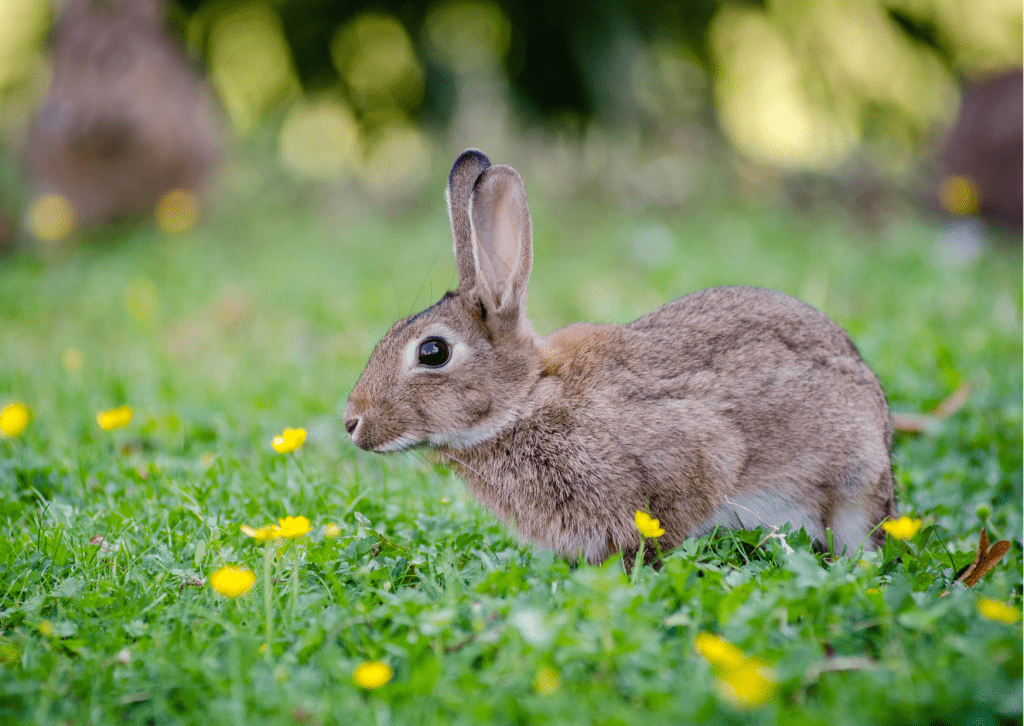
Distinguishing features:
While most of us would think we could recognise a rabbit, distinguishing them from hares can be challenging. Both have long ears and long hind legs but rabbits tend to have a sand-coloured coat as opposed to that of the hare which is more reddish. Rabbits are also much smaller than hares.
When and where?:
Wild rabbits are extremely common and can be found almost anywhere where they can dig a burrow. This includes unexpected places such as sand dunes, railway verges and even urban areas. Hares like to live close to farmland and are not seen as frequently.
Behaviours:
Rabbits move quickly with bobbing hops. Hares, on the other hand, have a wider, lolloping gait.
If you don’t spot these animals in person, you might see evidence of their activity. Footprints are a clear indication of their presence and you may also find their rounded droppings in grassland habitats and field edges. Droppings tend to exist in dense clusters and suggest that a burrow could be nearby.
Fun fact:
In a single leap, rabbits can jump up to 90cm!
Butterflies & Moths
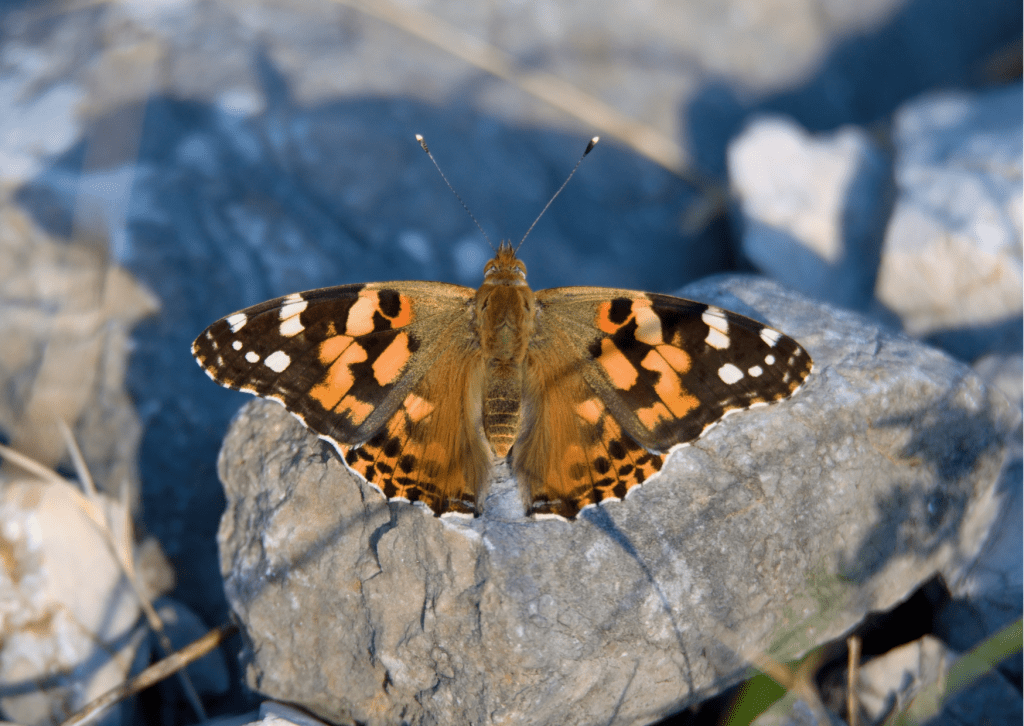
Distinguishing features:
Butterflies and moths are two groups of insects that are often admired for their intricate patterns and colours. While they share many similarities, they also have a few differences.
Butterflies have slender bodies with club-shaped antennae that end in a bulb-like tip, whereas moths have plump, furry bodies and antennae that are feathery or thin and bristly.
Butterflies’ wings are usually brightly coloured and held vertically over their bodies when at rest. They have a more predictable flight pattern compared to moths, which can be erratic and unpredictable in their movements.
Moths’ wings, on the other hand, are often drab and patterned in shades of brown or grey, with some having more intricate patterns like eyespots. When at rest, moths hold their wings flat, covering their bodies.
When and where?:
Butterflies and moths can be found in a variety of habitats, from gardens to forests, meadows, and wetlands. They are typically more active in the warmer months, with some species hibernating during the winter.
Behaviours:
Butterflies are known for their graceful flight and delicate feeding habits. They typically feed on nectar from flowers and often have a close relationship with specific plant species. They are also important pollinators, helping to fertilise plants and maintain ecosystems.
Moths, on the other hand, are often active at night, using the moon and stars to navigate. Some species, such as the hawk moths, are known for their fast and powerful flight, while others, such as the luna moth, have more graceful and slow movements. Moths are also important pollinators, and some species are essential for the survival of certain plant species.
Fun fact:
The Atlas moth is one of the largest moths in the world, with a wingspan of up to 30 cm. Its wings are patterned with bold stripes and eye spots, which help to deter predators.
Swans
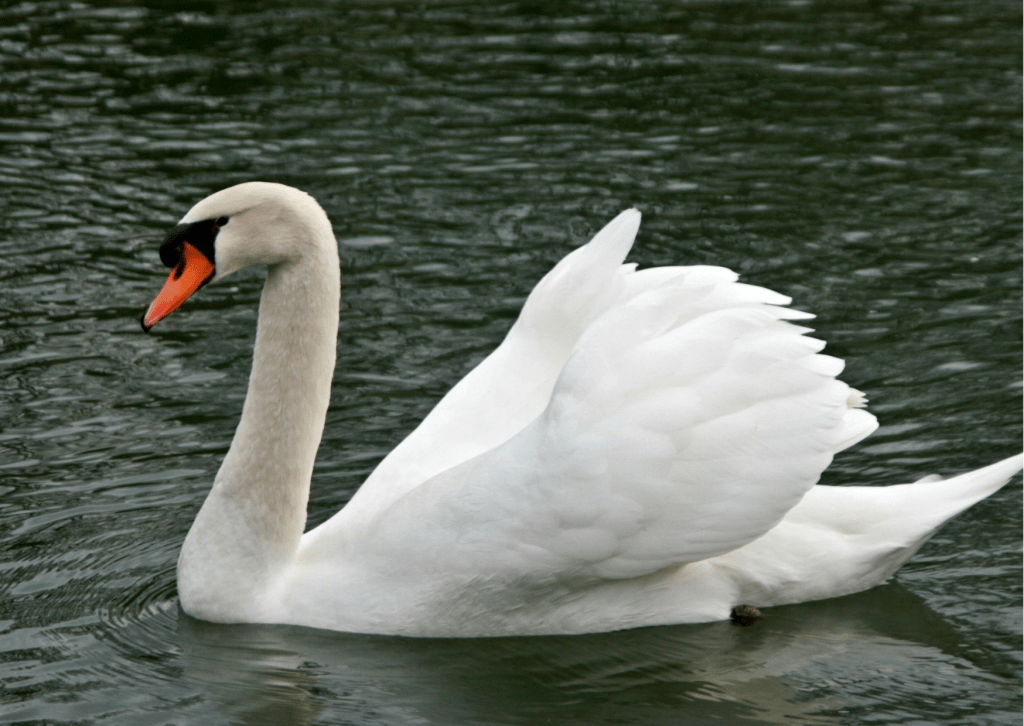
Distinguishing features:
Swans are easily recognized by their long, elegant necks and large size. There are three species of swans found in the UK: Mute swan, Whooper swan, and Bewick’s swan. The Mute swan is the most common and recognized species, known for its white plumage, black bill, and orange beak with a black knob. The Whooper swan is the largest of the three and has a long, straight, yellow beak and a black and yellow bill. Bewick’s swans, on the other hand, are smaller and have a more rounded head with a shorter beak than Whooper swans.
When and where?:
Mute swans can be found throughout the UK and are commonly seen in parks, gardens, and waterways. Whooper swans can be seen during the winter months in Scotland, Northern Ireland, and North-East England. Bewick’s swans, however, are less common and can only be seen in the UK during the winter months in a few areas of Scotland, including the Caerlaverock and Montrose basins.
Behaviours:
Swans are graceful birds that swim elegantly and often travel in pairs or family groups. Mute swans are known to be territorial and can be aggressive towards other birds that get too close to their nesting sites. They are also known for their courtship displays, where they will face each other, raise their wings, and bow their heads. Whooper and Bewick’s swans are migratory birds and spend their summers in Iceland and Scandinavia, flying to the UK in winter to escape the harsh conditions.
Fun fact:
Mute swans are a protected species and it is illegal to harm or disturb them. Swans also mate for life and will stay with their partners until death.
Rats
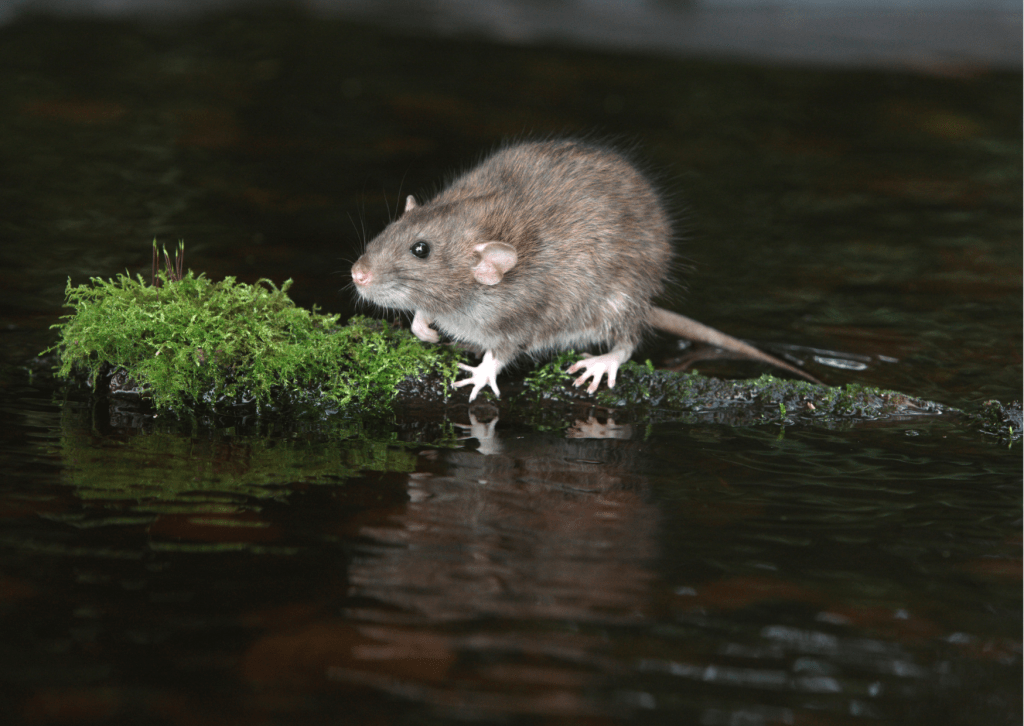
Distinguishing features:
Rats are rodents with long, slender tails and pointed snouts. There are two species of rats that are commonly found in the UK, the brown rat and the black rat. The brown rat, also known as the common rat, is the larger of the two and has coarse brown fur. The black rat, also called the roof rat, is smaller and has black or dark brown fur that is smoother and more velvety in texture.
When and where?:
Both species of rats can be found throughout the UK, particularly in urban areas. Brown rats prefer to live in burrows and nests in buildings, while black rats like to nest in high places such as roofs and trees. They are active throughout the year but are most active at night.
Behaviours:
Rats are known for their scavenging and omnivorous habits, eating almost anything that they can find, including fruits, vegetables, grains, and meats. They are also known to be very intelligent and resourceful, able to solve puzzles and navigate complex environments with ease. Rats are very social animals and prefer to live in groups, called colonies, which can number in the hundreds.
Fun fact:
Rats have been used in medical research for centuries and have contributed to many important discoveries, including the development of insulin for diabetes and the first successful heart transplant.
Pigeons & Doves
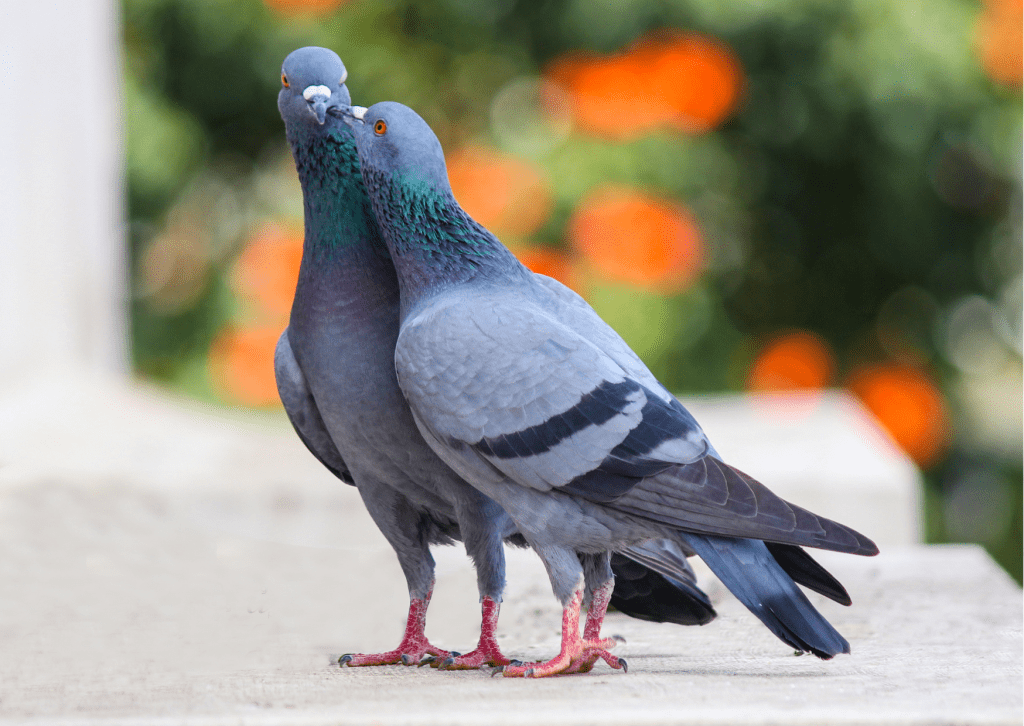
Distinguishing features:
Pigeons and doves belong to the same family of birds, Columbidae, and are closely related. They vary in size, colour, and markings, but they generally have plump bodies, small heads, and short necks. Pigeons are usually larger and have rounder bodies than doves, with short necks, and are found in a wide range of colours such as grey, brown, white, and black. In contrast, doves are generally smaller, more slender, with longer necks and tapered wings, and are often light brown or grey in colour.
When and where?:
Pigeons and doves are abundant and widespread birds in the UK and can be found in almost any habitat, from cities to forests, grasslands, and wetlands. The most common species of pigeons in the UK are the feral pigeon, wood pigeon, and stock dove, while the most widespread species of doves are the collared dove and the turtle dove, although the latter is a rare sight.
Behaviours:
Pigeons and doves are ground-feeding birds that feed on seeds, grains, and fruits. They are often seen in flocks, foraging in parks, gardens, and streets for scraps of food. They also have distinctive cooing calls, which can be heard from a distance. During the breeding season, male pigeons and doves perform elaborate courtship displays, such as puffing up their chests, bowing, and cooing loudly to attract females.
Fun fact:
Pigeons and doves are intelligent birds that have been used for centuries as messengers, pets, and even as racing birds. They have excellent navigational skills and can find their way home from hundreds of miles away. In addition, pigeons have been trained to recognize human faces and differentiate between different objects, such as paintings and photographs.
Ducks & Geese
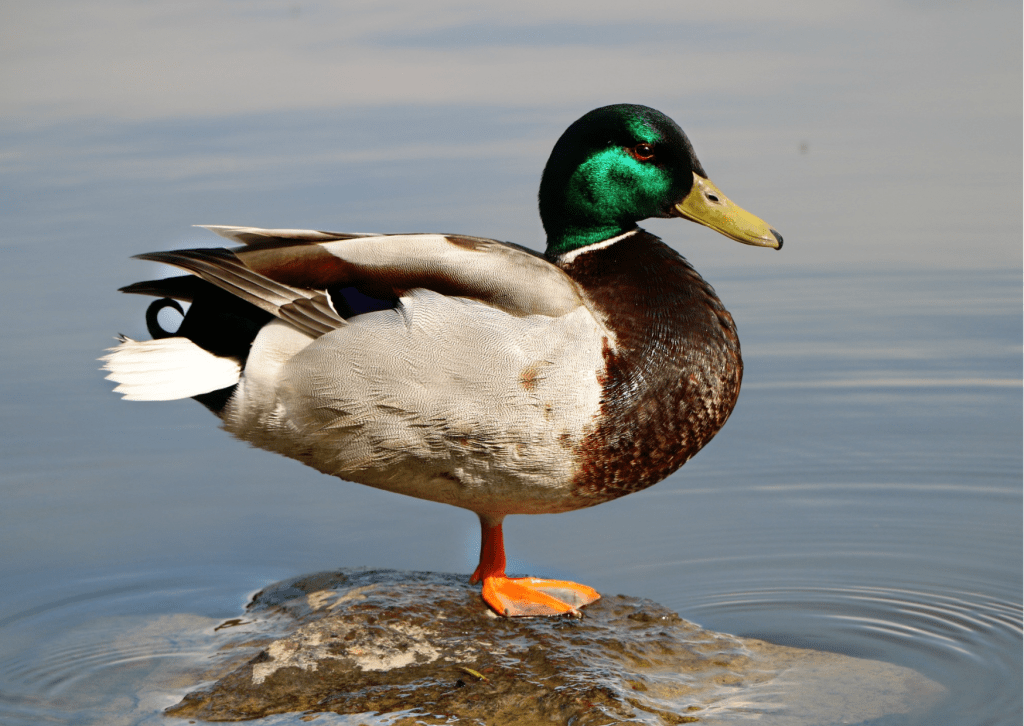
Distinguishing features:
Ducks and geese are two types of waterfowl that can be found in the UK. There are many different species of ducks and geese, each with their own distinguishing features. Generally, ducks are smaller in size than geese and have shorter necks and bills. They also have webbed feet, which allows them to swim easily in the water. Geese, on the other hand, are larger in size with longer necks and bills. They also have webbed feet but are better known for their loud honking calls.
When and where?:
Ducks and geese can be found in a variety of water habitats, including ponds, lakes, rivers, and wetlands. Some of the most common duck species found in the UK include the mallard, teal, and pochard. Similarly, the most common geese species found in the UK include the Canada goose, greylag goose, and barnacle goose. While some species are year-round residents, others are migratory and only visit the UK during certain times of the year.
Behaviours:
Ducks and geese are social animals and are often found in groups, known as flocks. They are also well adapted to life in the water and can dive for food, such as aquatic plants and insects. Ducks and geese are also known for their distinctive courtship displays, which involve various movements and sounds to attract a mate. In addition, many species of ducks and geese are known for their seasonal migrations, which can cover thousands of miles and involve large flocks of birds.
Fun fact:
Geese are known for their strong family bonds and will often mate for life. They are also known for their impressive teamwork, with each member of a flock taking turns to lead the way during migrations.
Frogs & Toads
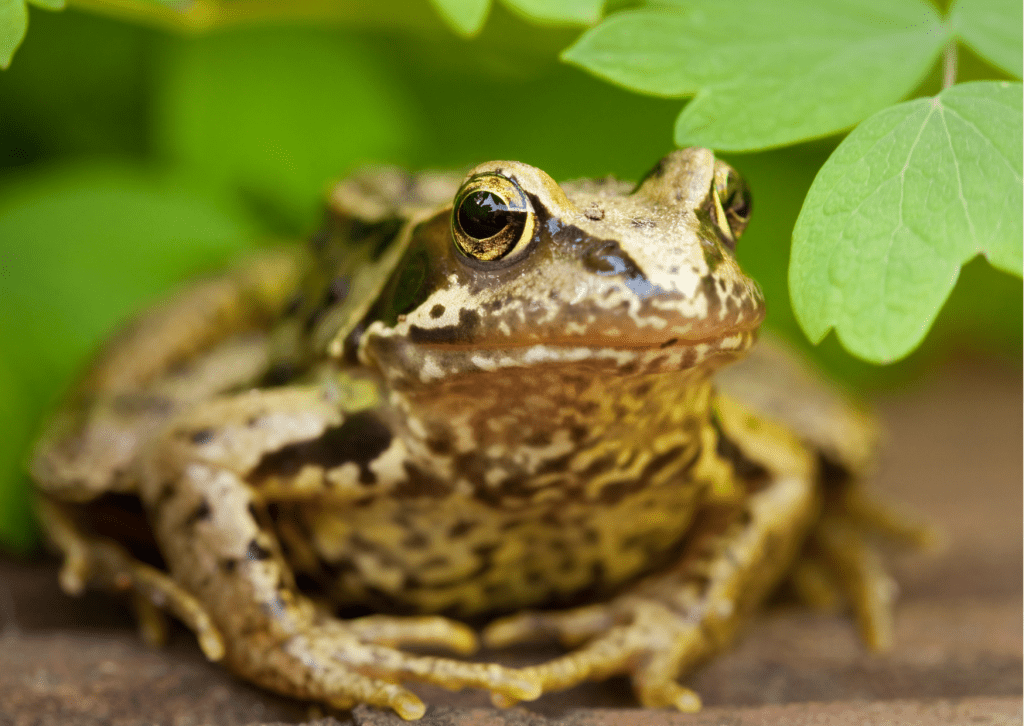
Distinguishing features:
Frogs and toads are both amphibians and have similar body structures. However, frogs tend to have smooth, moist skin and long, powerful hind legs that are built for jumping. They also have webbed feet that allow them to swim efficiently. Toads, on the other hand, have dry, bumpy skin and short, stubby legs that are not well-suited for jumping. They also have parotoid glands behind their eyes that secrete a toxin to deter predators.
When and where?:
In the UK, there are three common species of frog – the common frog, the pool frog and the marsh frog – and two species of toad – the common toad and the natterjack toad. Frogs and toads can be found in a variety of habitats, including ponds, streams, rivers, woodlands, meadows and gardens. They are most active during the breeding season, which usually takes place in spring.
Behaviours:
Frogs and toads are most easily spotted during their breeding season when they gather in large groups to mate. The males will call out to attract females, with each species having a distinctive call. After mating, the female lays her eggs in the water and then the adults return to their terrestrial habitats. Frogs and toads are also important indicators of the health of an ecosystem as they are sensitive to changes in their environment, such as pollution or habitat destruction.
Fun fact:
Frogs and toads can both hibernate during the winter to conserve energy. They will burrow into mud or soil to avoid freezing temperatures and will slow down their metabolism to survive on stored energy until the warmer weather returns. Some species of frog and toad can even survive being frozen solid and will thaw out in the spring!
Fish
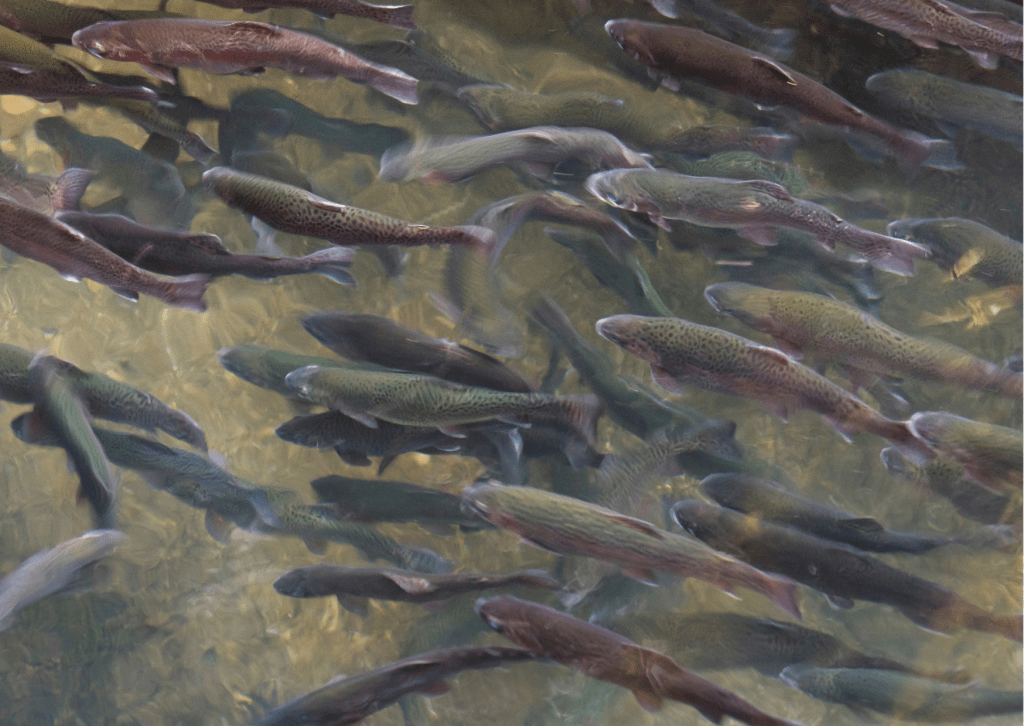
Distinguishing features:
Fish are incredibly diverse, with over 500 species found in UK rivers and ponds. However, they are all characterised by their streamlined body shape and gill covers. Their skin can range from scale-less to having large, colourful scales. They come in various sizes, from tiny minnows to the massive 30kg salmon.
When and where?:
Fish are mainly found in freshwater ponds and waterways. Some species are more commonly found in certain types of water. For example, the brown trout can be found in cold, clear waters, whereas the carp is more commonly found in warm, slow-moving water. Pike prefer deep, slow-moving rivers and lakes.
Behaviours:
Fish are fascinating creatures with a variety of behaviours. Some, like the brown trout, migrate from the sea to rivers and streams to spawn. Others, like the common carp, can be seen foraging on the bottom of shallow ponds. Some species, like the pike, are predatory and will ambush their prey. Others, like the rudd, will feed on plankton and insect larvae.
Fun fact:
The largest ever rod-caught salmon caught in Scotland was from the River Tay in 1922, by Georgina Ballantine. The salmon weighed in at a whopping 64 lbs, which is equivalent to the weight of an average 9-year-old child!
Bees
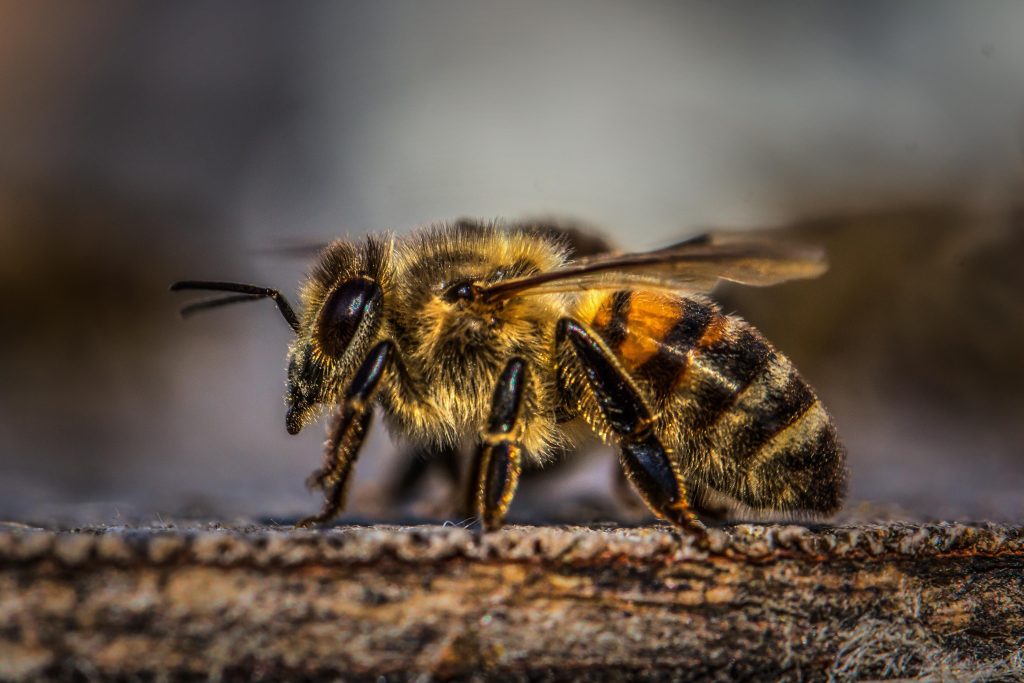
Distinguishing features:
Bees are known for their unique fuzzy appearance and black and yellow stripes. There are over 270 species of bees in the UK, with varying shapes, sizes and colours. Bumblebees, for example, have a round and furry appearance with a black and yellow striped body. Honeybees have a slimmer appearance, with a smaller, less fuzzy body and a striped abdomen. Solitary bees have a much smaller and slender appearance with little to no hair covering their bodies.
When and where?:
Bees can be found throughout the UK in many different habitats, from gardens to meadows, forests to farmland. They are most active during the spring and summer months when flowers are in bloom, providing an essential source of food for them.
Behaviours:
Bees are well-known for their role in pollination, making them vital to ecosystems and food production. They will visit flowers to collect nectar and pollen, which they bring back to their hives or nests. Bees communicate with each other using complex dance movements to indicate the direction of food sources. Honeybees will also swarm when their hive becomes overcrowded, with the queen leading a group of bees to establish a new colony.
Fun fact:
Bumblebees are able to regulate their own body temperature, allowing them to fly in colder temperatures than other bees. They do this by shivering their wing muscles to generate heat.
2 https://www.ecologybydesign.co.uk/ecology-resources/most-endangered-animals-in-uk